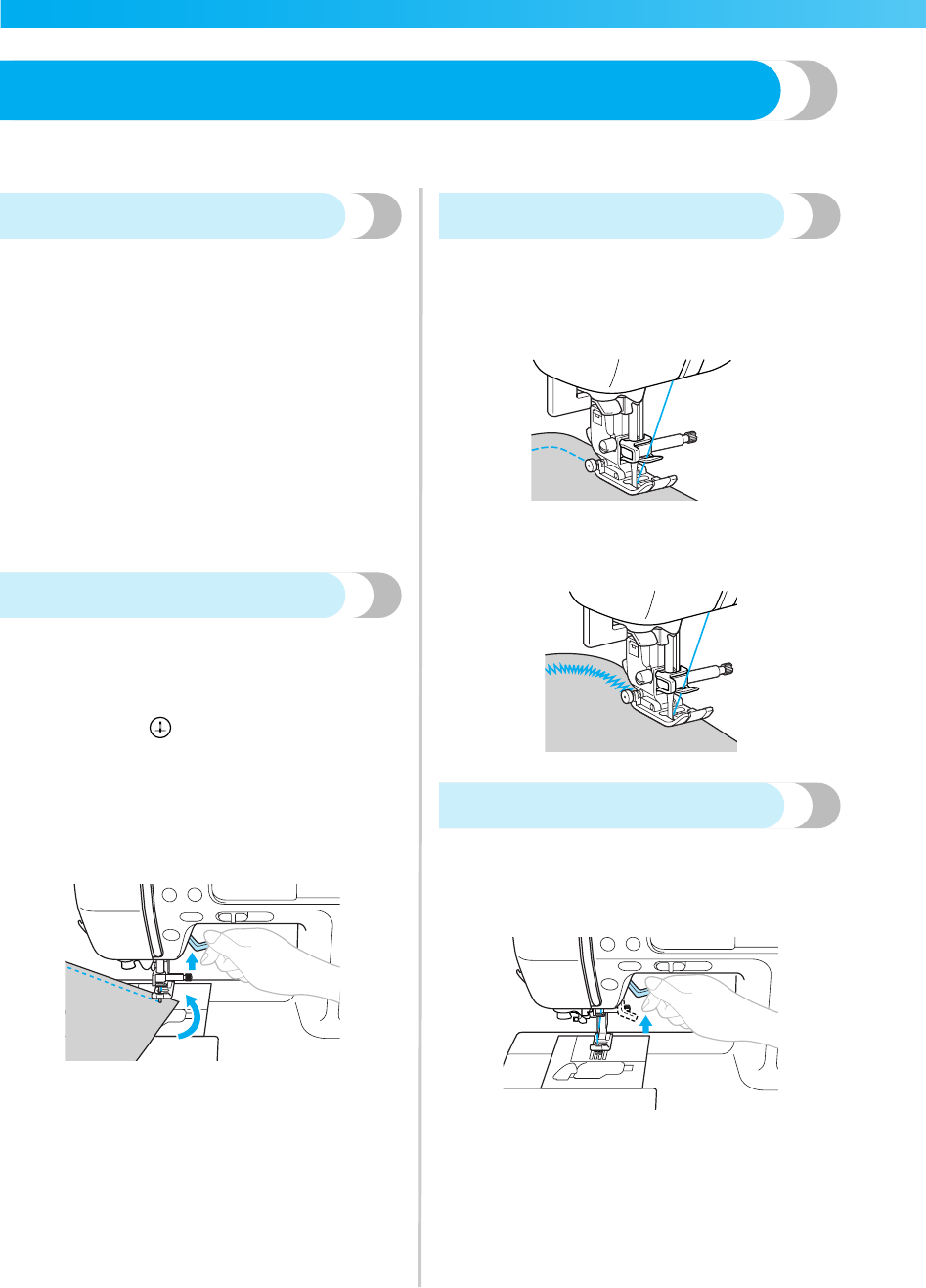
SEWING BASICS — — — — — — — — — — — — — — — — — — — — — — — — — — — — — — — — — — — — — — — — — — — —
68
Useful Sewing Tips
Various ways to achieve better results for your sewing projects are described below. Refer to these tips when
sewing your project.
Trial sewing
After you have set up the machine with the thread
and needle appropriate for the type of fabric being
sewn, the machine automatically sets the stitch
length and width for the stitch that is selected.
However, a trial piece of fabric should be sewn.
Depending on the type of fabric and stitching being
sewn, the desired results may vary. For trial sewing,
use a piece of fabric and thread that are the same as
those used for your project, and check the thread
tension and stitch length and width. Since the results
may vary depending on the type of stitching and the
number of layers of fabric sewn, perform the trial
sewing under the same conditions that will be used
with your project.
Changing the sewing direction
a
When the stitching reaches a corner, stop the
sewing machine.
Leave the needle lowered (in the fabric). If the
needle remained up when the machine stopped
sewing, press (Needle position button) to
lower the needle.
b
Raise the presser foot lever, and then turn the
fabric.
Turn the fabric using the needle as a pivot.
c
Lower the presser foot lever and continue
sewing.
Sewing curves
Stop sewing, and then slightly change the sewing
direction to sew around the curve. For details on
sewing with an even seam allowance, refer to
"Sewing an even seam allowance" (page 70).
When sewing along a curve while using a zigzag
stitch, select a shorter stitch length in order to obtain
a finer stitch.
Sewing thick fabrics
■ If the fabric does not fit under the presser foot
Raise the presser foot lever even higher to bring
the presser foot to its highest position.


















